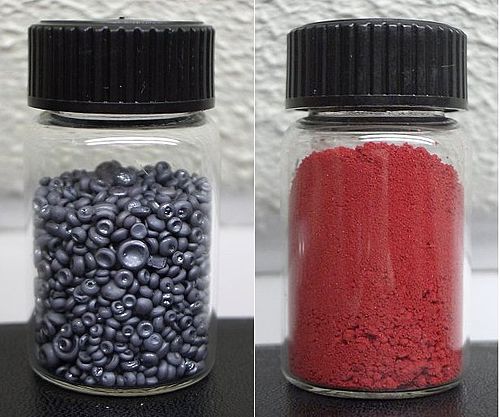Facts for Kids
Selenium is a chemical element that serves as an essential trace element in human nutrition and has important applications in electronics, glassmaking, and solar energy.
Overview
What Is Selenium
How Selenium Works
Selenium Use Cases
History Of Selenium
Advantages Of Selenium
Components Of Selenium
Selenium Resources And Community
Selenium Vs Other Automation Tools
Challenges And Limitations Of Selenium

Inside this Article
Chemical Element
Semiconductors
Electronics
Technology
Community
Function
Software
Medicine
People
Brazil
Did you know?
🔍 Selenium is a non-metal element that plays a crucial role in electronics and glass production.
⚗️ It is often used as a photoconductor in photocopiers and laser printers.
🌱 Selenium is essential for human health, contributing to antioxidant defense systems.
💎 Selenium can be found in various forms, including red, gray, and black allotropes.
🌍 Major sources of natural selenium include certain soils and some mineral deposits.
⚠️ Excessive selenium exposure can lead to toxicity and health issues such as selenosis.
🧪 Selenium has applications in semiconductor technology, particularly in photovoltaic devices.
🔋 It is used in the production of certain types of batteries, including some solar cells.
🌡️ Selenium's atomic number is 34, and it is located in group 16 of the periodic table.
🥗 Foods rich in selenium include Brazil nuts, seafood, and organ meats.
Introduction
It’s a shiny, grayish substance that plays a big role in our daily lives. Selenium can be found in foods like garlic, broccoli, and fish! 🥦🐟 It helps our body stay healthy, acting as an antioxidant. This means it helps fight off sickness! Many people might not know that this cool element is often used in making shiny glass and solar panels, which help capture sunlight and turn it into energy to power our homes! 🌞
What Is Selenium?
🔬 It was discovered in 1817 by a Swedish scientist named Jöns Jacob Berzelius. Selenium is non-metal and can be found in different forms - some are shiny, while others are dull. It’s like having a surprise in a box! 🎁
This element is found in nature, usually in rocks, soil, or even plants! It is essential for our bodies as it helps make antioxidants that protect our cells, keeping us healthy and strong!
How Selenium Works
When you eat foods containing selenium, it gets absorbed into your bloodstream and travels to cells. There, it helps make special proteins called selenoproteins, which protect your cells from harmful things. 💥
It helps boost your immune system so you can fight off germs and stay healthy! Scientists have also found that selenium can help with thyroid function, which is super important for regulating energy! ⚡
️ Think of selenium as a tiny helper that makes sure you feel your best every day!
Selenium Use Cases
In health and nutrition, selenium is important for our diets and helps prevent illnesses. Some people even take selenium supplements! 💊
In technology, selenium is widely used in electronics, like solar panels, helping to capture sunlight and turn it into energy. 🌞
Additionally, it’s used in photography, glass-making, and even in some cosmetics! 🧴
Scientists keep discovering more ways selenium can help us! Talk about a busy little element!
History Of Selenium
At first, scientists didn’t know much about selenium. However, in the 1930s, they learned how important it was for health! Many scientists, like Dr. Clyde L. McCoy, showed that selenium is vital for animals and humans. 🦙🧑⚕️ Today, selenium is recognized as essential in nutrition and plays an important role in farming and medicine! 🏥
Advantages Of Selenium
It helps our bodies grow strong and keep our immune systems fighting fit! A little bit of selenium can go a long way! It’s also a fantastic antioxidant that protects our cells from damage. 🦸
♂️ In technology, selenium helps create amazing devices like solar panels, making energy more eco-friendly! 🌎
Plus, it aids in enhancing electronic devices like semiconductors, making them work better! So, whether in health or tech, selenium is an element that supports our daily lives in many wonderful ways!
Components Of Selenium
️ This element mainly comes from minerals in the earth, such as selenide or selenite. It can also be found in foods like Brazil nuts! 🌰
Eating just a few Brazil nuts can give you all the selenium you need for a day! Isn’t that cool? 😃
Each type of selenium has different properties and is used in different ways, especially in technology!
Selenium Resources And Community
You can visit websites like SeleniumHQ to find guides, tutorials, and forums where you can ask questions! 🗨
️ Many people around the world contribute to the Selenium community, sharing their knowledge through blogs and videos. 📹
You can also connect with others who love technology in online forums! Places like Stack Overflow are like sports teams where everyone supports each other! 🏆
By exploring these resources, you can become a selenium superstar and help others learn too! 🌟
Selenium Vs Other Automation Tools
️ Unlike other tools, Selenium is super flexible and can work with lots of programming languages, like Java and Python! 🐍
Other tools might be limited in what they can do, but Selenium can test different types of web applications across various browsers. 🌐
It’s a favorite among developers because it’s open-source, meaning it’s totally free! 🎉
So, while there are many automation tools out there, Selenium stands out for its versatility and accessibility!
Challenges And Limitations Of Selenium
Getting too little selenium can lead to health problems, like weakened immunity or thyroid issues. On the flip side, too much selenium can be harmful and cause “selenosis,” which can make people feel sick! 🤢
It’s like having too much candy! 🍭
In technology, sometimes selenium can be complicated to work with, especially for beginners. 🌈
So, it’s important to find the right balance and use this element wisely to enjoy its great benefits without any problems!

